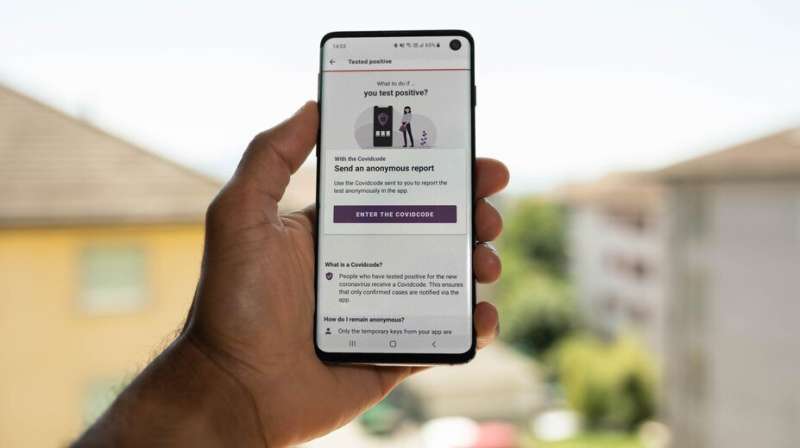
An international collaboration with EPFL has developed a method to improve the performance of COVID-19 contact-tracing apps by taking into account a user’s recent contacts, risk levels and shared information about tests and symptoms.
Contact-tracing apps like SwissCovid have enormous potential to mitigate the spread of the COVID-19 pandemic. Users allow the apps to track their contact with each other and estimate the chances that they might have come into contact with someone infected with the SARS-CoV-2 coronavirus. If they have, the app issues a notification.
Understandably, contact-tracing technology has raised a lot of ethical and privacy questions, all of which are weighed against the need to safeguard public health. Nonetheless, there has been comparably less effort in optimizing the performance and accuracy of contact-tracing apps, despite their great potential in addressing the pandemic.
Now, a collaboration of scientists has developed a statistical method that can improve the performance of contact-tracing apps by taking into account a user’s recent contacts, risk levels and shared information about tests and symptoms. Published in PNAS, the work was carried out by scientists at EPFL, Italy, and France.
The scientists used Bayesian statistics, which calculate the probability of events. Here, they used this approach to estimate the risk that an individual is infected, based on their intrinsic degree of risk, the list of their recent contacts and the estimated risk level of those contacts.
“We wanted to quantify what epidemiological gain we could have if users who were recently in contact could also exchange messages of information,” says Professor Lenka Zdeborová at EPFL’s School of Basic Sciences and School of Computer and Communication Sciences, one of the study’s main authors. “By just adding simple message-passing, we could estimate the risk of contracting COVID-19 with much higher accuracy than simple contact tracing.”
The scientists’ mathematical approach quickly transformed into fully distributed algorithms that work just off communication between individuals who have recently been in contact. The communication can be completely encrypted and anonymous so that it can potentially comply with future privacy regulations.
Testing out their “probabilistic risk” method, the scientists found that it is an efficient way to mitigate epidemics like COVID-19. Of course, the approach works best within a window of the epidemic, typically after the manual tracing of all contacts of infected people becomes practically impossible but before the fraction of infected people reaches the scale where a lock-down becomes unavoidable.
Source: Read Full Article
